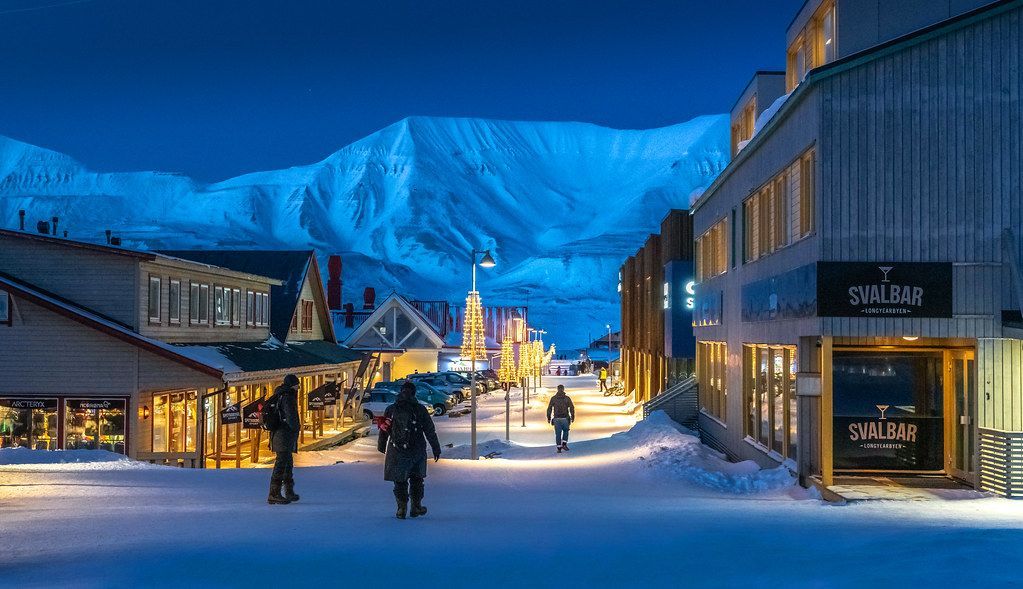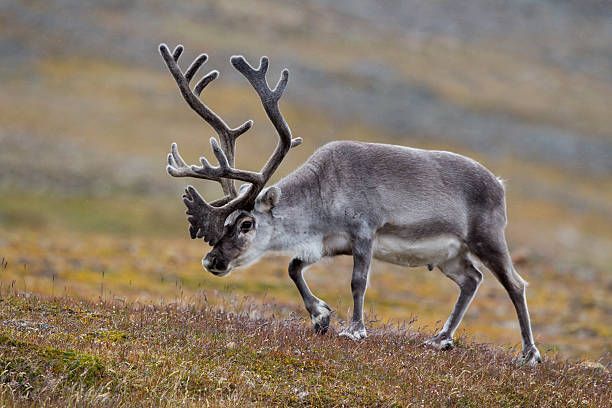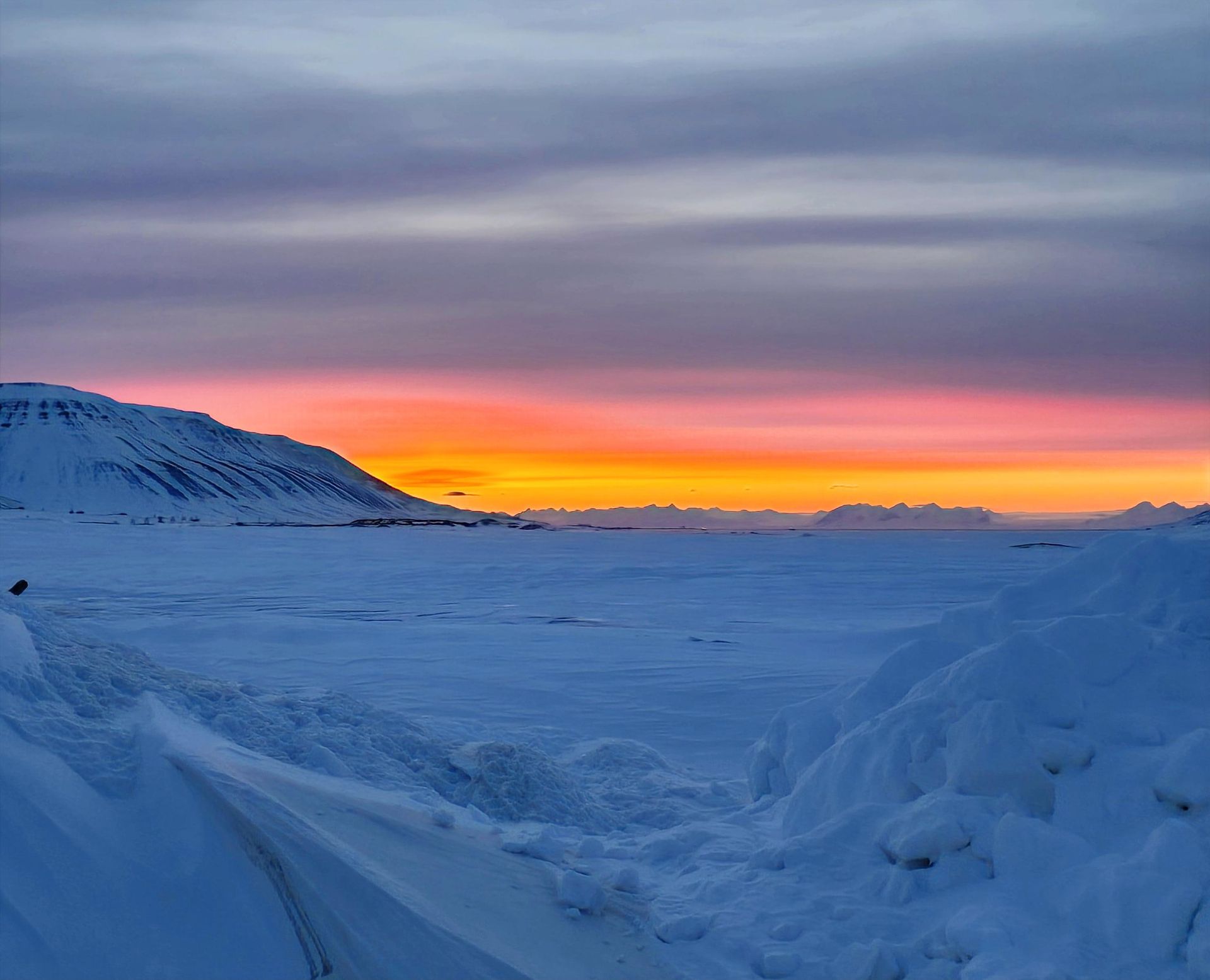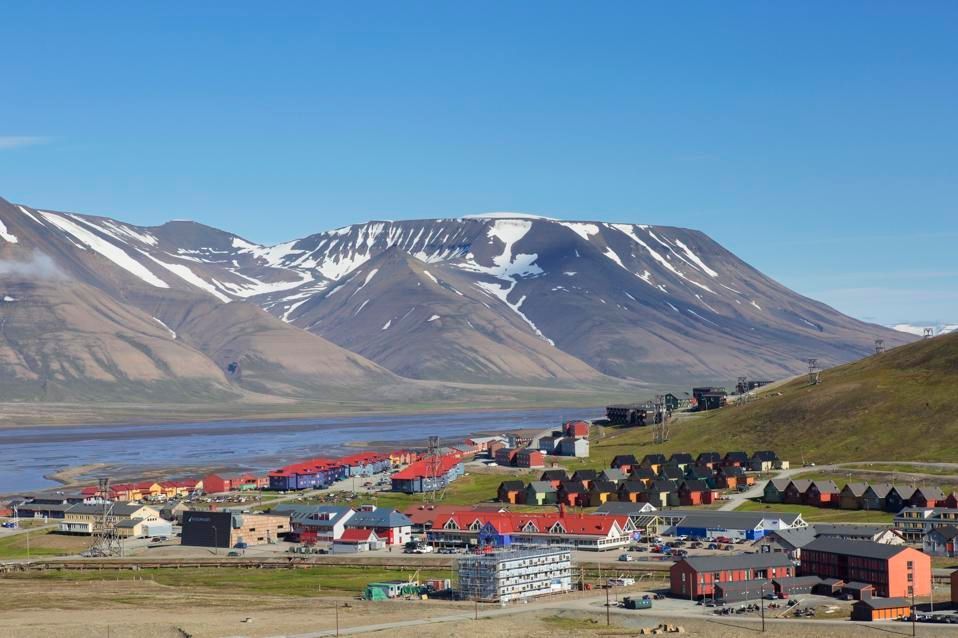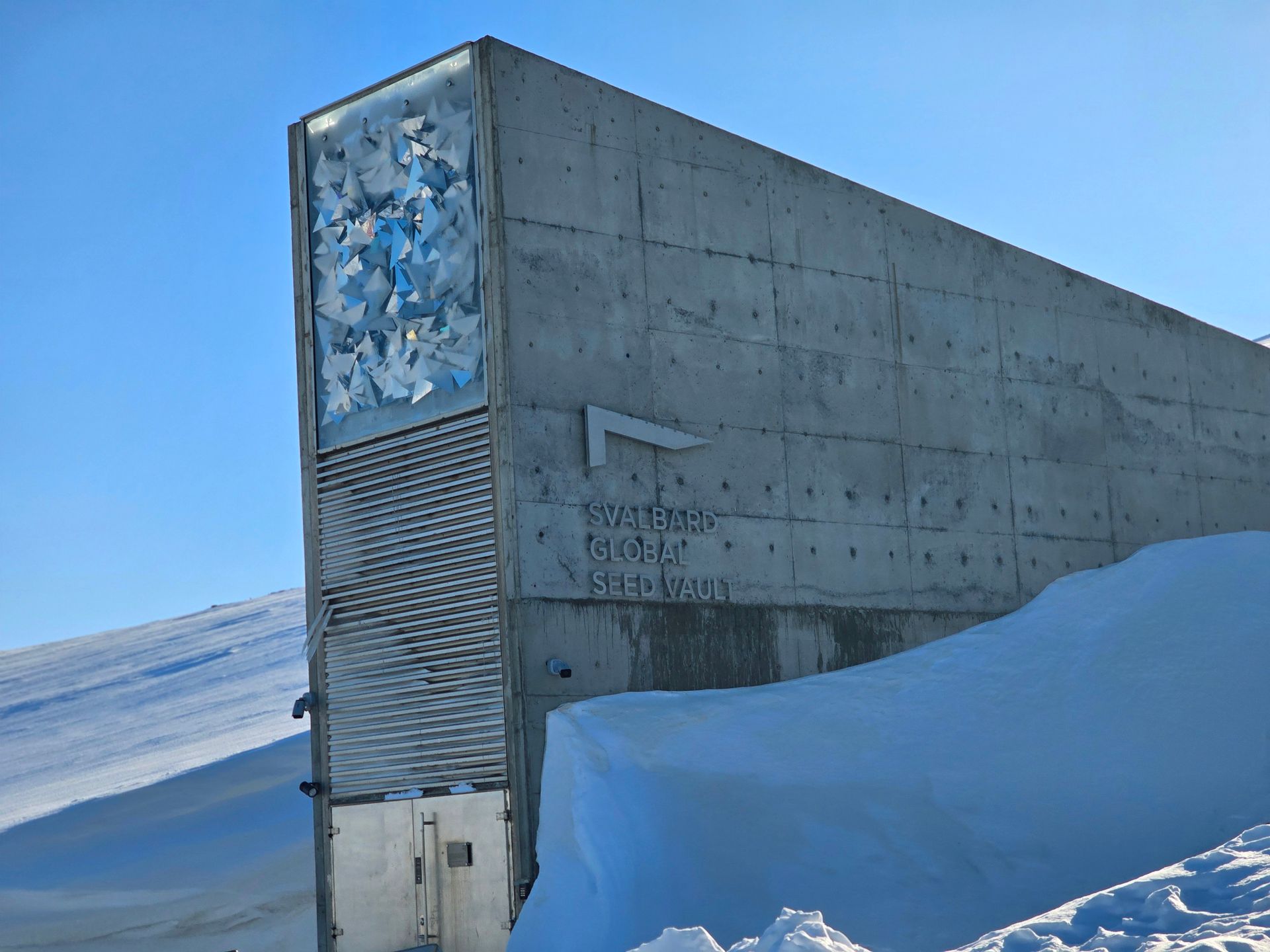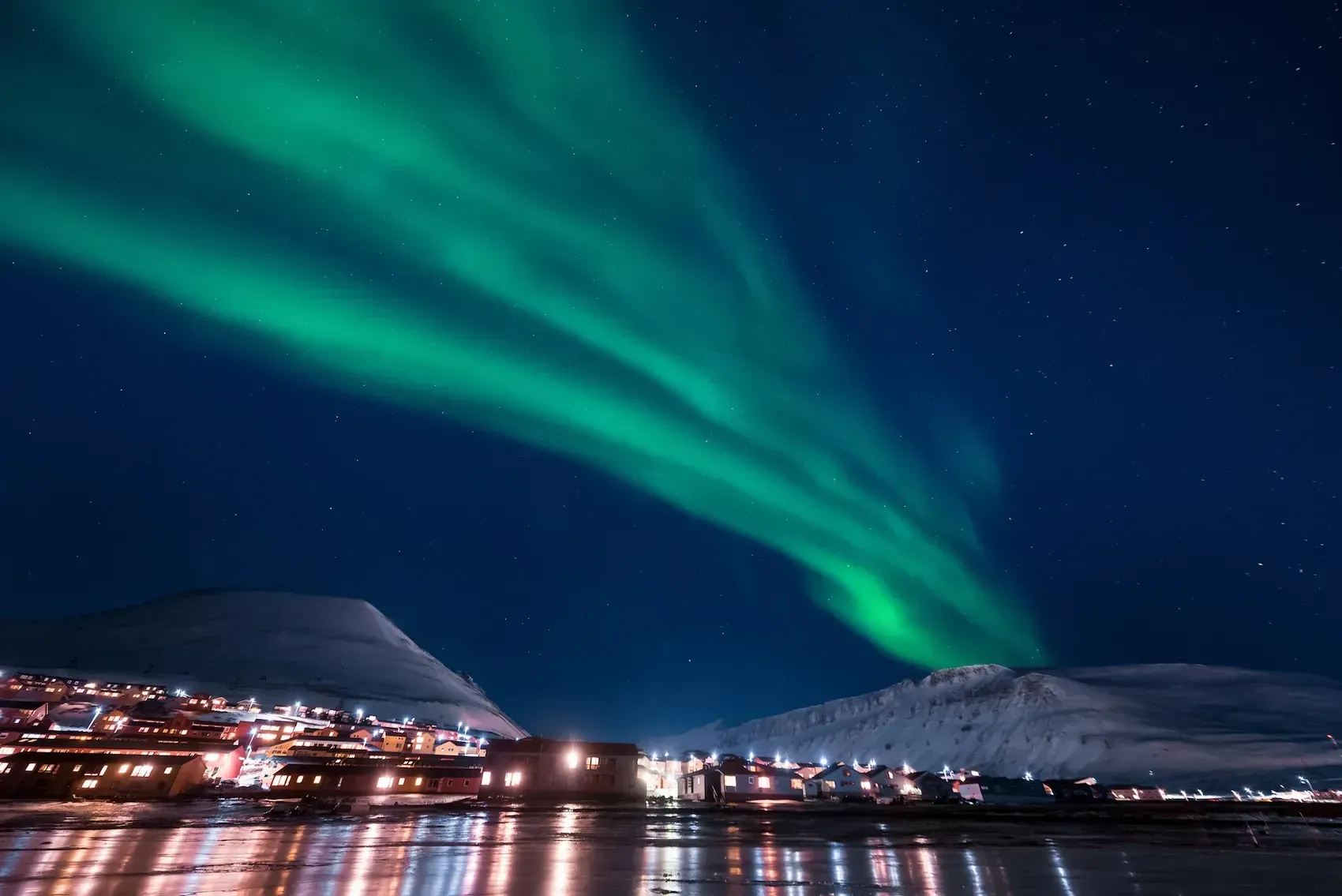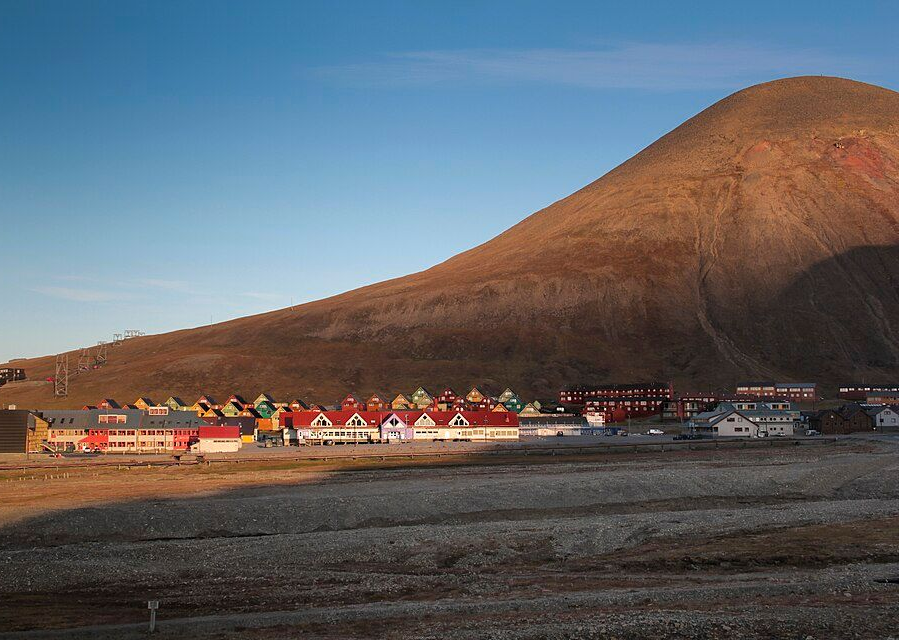Svalbard & The Arctic Route (Norway)
About Svalbard...
Svalbard is an Arctic archipelago belonging to Norway, located roughly halfway between mainland Norway and the North Pole. Its main island is Spitsbergen, where most of the population lives. It is one of the world’s most unique, remote, and fascinating places, both geographically and culturally. Svalbard's landscape is dominated by vast glaciers, rugged mountains, frozen tundra, and dramatic fjords, with nearly 60% of the land covered in ice. Seasonal contrasts define life here: the Polar Night, from mid-November to mid-February, brings 24 hours of darkness, while the Midnight Sun, from May to August, offers continuous daylight.
Despite its remoteness, Svalbard teems with wildlife. Polar bears are iconic, though they are not as commonly seen on land as the Arctic foxes and the distinctive Svalbard reindeer. The region is also home to walruses, bearded and harp seals, numerous whale species, and vast seabird colonies that flourish during the summer months. Strict environmental regulations help protect these species and their fragile Arctic habitats, and travellers are required to follow safety guidelines at all times, especially when venturing outside the settlements.
The main settlement, Longyearbyen, is one of the world’s northernmost communities and home to a diverse population of around 2,500 residents from more than 50 nationalities. It offers surprisingly vibrant cultural life with cafés, museums, galleries, and gourmet restaurants. Other communities include the Russian mining town of Barentsburg and the international research base at Ny-Ålesund. Notably, Svalbard has no indigenous population; instead, it is a place of transient workers, scientists, explorers, and adventurers.
Historically reliant on coal mining, Svalbard’s economy has shifted toward tourism, scientific research, and satellite-based environmental monitoring. During winter visitors can enjoy dog sledding, snowmobiling, ice cave exploration and northern lights excursions (day and night), and during summer there are boat and fjord cruises, visits to abandoned mining sites, kayaking and glacier hikes. With its pristine wilderness and extreme conditions, Svalbard offers an unparalleled sense of remoteness, stillness, and natural power.
Nuggets of information:
- An Arctic desert, Svalbard is considered one of Earth’s last great wildernesses.
- With around 3,000 polar bears and about 2,500 residents, polar bears actually outnumber people.
- During the Polar Night, the Northern Lights can even be seen during the day.
- You cannot be born or buried on Svalbard due to strict environmental and logistical conditions.
- Carrying a gun is required when travelling outside settlements, for polar bear safety.
- Seven of Norway’s 47 national parks are located in Svalbard.
- Svalbard is a completely visa-free zone for everyone, regardless of nationality.
- It is home to the world’s northernmost permanent settlement.
- Across the entire archipelago, there are only about 25 miles of roads.
- There are no trees in Svalbard.
- Spitsbergen, the main island houses the world’s only Global Seed Vault, safeguarding millions of seed samples for future generations.
- It’s customary to take off your shoes when entering many buildings, a tradition linked to snow and coal dust.
- Longyearbyen Airport is built directly on permafrost.
- Cats are banned on the islands to protect vulnerable birdlife.
- Svalbard is almost entirely cashless; Longyearbyen has no bank branch or working ATM.
Our Itineraries
Itineraries: As destination experts, we specialise in crafting bespoke itineraries tailored to your vision, personal style, and interests. A 4–5 day short break gives you ample time to experience the essence of Svalbard. During the summer months, you can even venture out on an Arctic Mini Cruise to explore the archipelago’s pristine landscapes and remarkable wildlife. Contact us to start planning your unique and unforgettable trip to Svalbard.
Multi – City tours and extensions:
With direct connections from Longyearbyen to both Oslo and Tromsø, a two-city break works brilliantly. City breaks across the rest of Norway are equally special at any time of the year.
The long days of summer are perfect for enjoying the outdoors and fjord cruises. Trondheim is fast gaining a reputation as Norway’s gastronomic capital, with a thriving food scene and plenty to offer the curious traveller.
For Christmas markets, consider visiting Bergen, home to Pepperkakebyen, the world’s largest gingerbread town, delighting visitors of all ages with its intricate and whimsical displays. For Christmas lovers and Santa fans, the Nissenhuset Christmas Museum in Mehamn, a small town perched on the northernmost tip of Norway, is truly special. Housing over 27,000 items, it represents the world's largest private collection of Christmas artifacts, offering a magical experience for visitors of all ages.
Head to Alta in summer or winter to explore its ancient rock carvings, dating back nearly 7,000 years. You can also enjoy a meal with an indigenous Sami family and gain a fascinating insight into their traditional way of life, including reindeer herding.
What our clients say: Check out our testimonials page
Trotting Soles in the media: Click here
Trotting Soles Blogs:
Click here
General Guidance:
Visa:
No nationality requires a visa to enter Svalbard. However, a passport is mandatory for all travellers. If your nationality requires a visa to enter Norway or the Schengen Area, you will need a Schengen visa, as nearly all flights to Svalbard transit through mainland Norway. Importantly, you should apply for a double-entry (or multiple-entry) Schengen visa, since you will need to re-enter Schengen territory when returning from Svalbard to mainland Norway. Click on the link for a visa guide for Svalbard (Norway).
Insurance:
It is a mandatory requirement for all travellers booking with a UK-based tour operator to hold adequate travel insurance. Your policy must provide cover for loss of luggage and personal belongings, medical treatment or hospitalisation, repatriation, flight delays or cancellations, and trip curtailment or cancellation due to unforeseen circumstances. Please be aware that certain destinations or regions may be subject to government travel advisories, in which case standard travel insurance may not offer sufficient protection. If your itinerary includes such areas, or if an advisory is issued after your booking is confirmed, we will notify you. However, it remains your responsibility to ensure that your insurance policy provides comprehensive and appropriate coverage for all aspects of your travel plans.
Travel advisory:
We recommend consulting the travel advisory of the country you are travelling to/wish to. Click here for the relevant weblinks – UK, USA, Canada, Australia and New Zealand. Citizens of other countries must check their respective governments’ advice.
Medical advice:
We recommend consulting your medical practitioner or a travel health clinic for up-to-date advice on vaccinations and any necessary medications.

